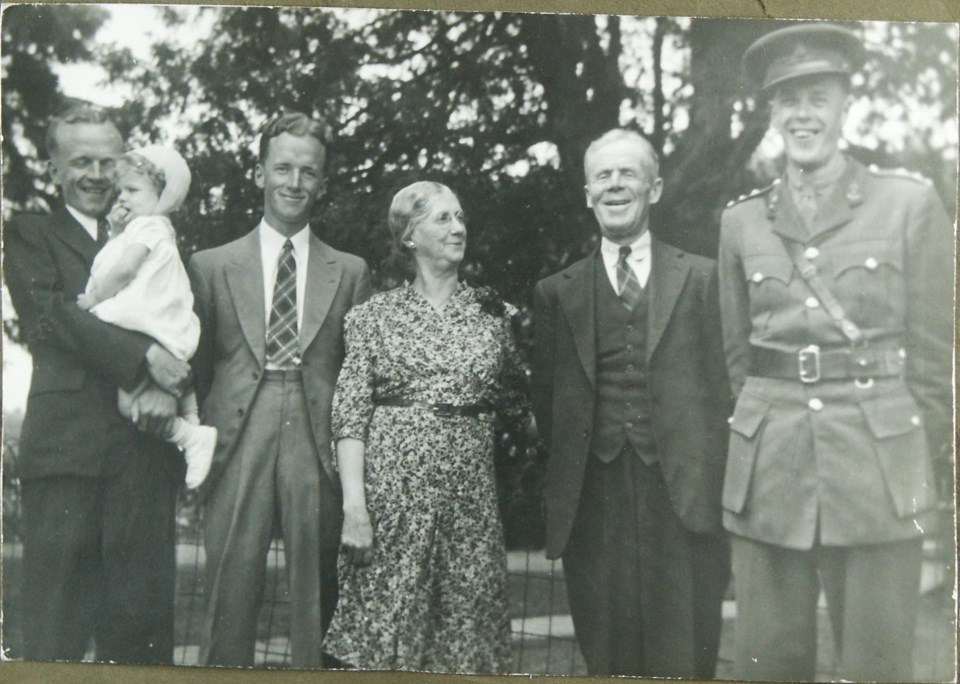During the Second World War, Canada was the first Commonwealth country to send troops to Britain, the initial contingent arriving before 1939 closed. Over the course of the conflict hundreds of thousands of Canadians — more than 40 per cent of the male population of fighting age, and virtually all of them volunteers — enlisted.
Bradford’s Keith Faris was one of them.
Keith Donnell Faris was born Oct. 15, 1912, on Maple Farm, Bradford-West Gwillimbury, to parents William George and Bertha Faris. Young Keith was raised to be proud of his family connection to the community, for few roots went as deep in Bradford — John Faris arrived from Scotland in 1818 to lay the foundations for a family that became embedded in the soil they worked and in the community that they called home.
Keith grew into a bright young man and was uninterested in following in the family tradition of farming. Instead, he attended the University of Toronto, where he excelled. Upon graduation in 1934, he began a teaching career.
He was teaching in Rockcliffe Park, Ottawa, when the dark clouds of war formed over Europe in 1939 and Canada found itself embroiled in a second global conflict. With a keen sense of duty, Keith answered his nation’s call for volunteers to serve. He put aside his career and enlisted in the Canadian army. With his education, he was tapped as officer material and, after training, was posted to the Royal Canadian Artillery.
In 1941, Keith was sent overseas to join the growing Canadian contingent in Britain. What followed was two long years as Canadian forces trained and waited, and waited, and waited some more for their turn to see action. Finally, in 1943, elements of the Canadian army participated in the Allied invasion of Sicily. More than half a million Canadians, Americans, and British invaded the Italian island — among them Lieutenant Keith Faris, 71st Battery, 8th Canadian Field Artillery Regiment, 8th British Army.
Keith participated in the conquest of Sicily, the successful invasion of the Italian mainland, and the relentless pursuit of German forces up the Italian peninsula. He took part in the horrors of the Battle of Ortona in 1943 — one of the bloodiest battles endured by Canadian soldiers in the Second World War — and emerged unscathed.
By May 1944, there was a sense of cautious optimism. The Allies were slowly but surely driving the Germans north, up the Italian boot, and any day now they would invade northwest Europe (few knew the invasion would be Normandy). There was a growing certainty among Allied soldiers that they would win the war.
Keith wouldn’t live to see that victory. Late May saw the Allied armies evict the Germans from a network of defences and drive to another series of fortifications, the Hitler Line. The 71st Battery was moving up to new positions when it was caught out in the open by heavy German artillery. Rounds exploded all around, throwing up massive clumps of dirt and rock, showering the exposed soldiers with shrapnel. Men began to fall wounded.
Keith ordered his men to seek cover while he himself remained in the open, critically exposed, dragging wounded men to cover, saving lives. Selfless. Heroic. He was struck by shrapnel and fell dead.
Lt. Keith Faris was 31.



